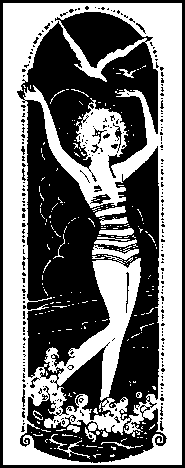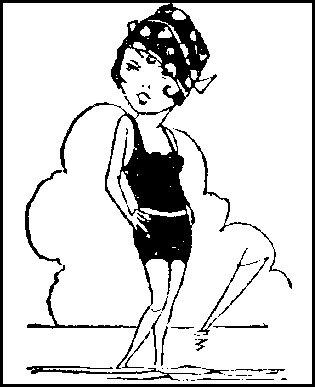Modesty
Katha Pollitt

We think of teenage mortification as general angst common to both sexes, but it is hard to imagine a magazine in which boys would write in about, say, getting an erection while standing at the blackboard, or having a wet dream while sleeping on their grandmother's best sheets. (But then, for similar reasons, there isn't really a boys' equivalent to the girls' magazines.)
"Most of what I get in the post is about menstruation," says one mortification- The message that your body will betray you if not rigidly policed is evident in the mores these magazines promote: sex is presented as a temptation to be avoided, its risks are continually emphasized, its normality --- half US teen-agers have sex while in high school --- barely noted. Houppert claims that menstrual modesty has important consumer and health consequences for girls and women. Sanitary products are used by half the population roughly one week a month for roughly 38 years --- at five tampons a day for five days, that works out at some 11,400 tampons over a lifetime --- yet there is no list of contents on a box of tampons, and consumer awareness is low: indeed, Houppert writes that the inspiration for The Curse was her discovery that Tambrands had reduced the number of items per box from 40 to 32 while raising the price. Unfortunately for her argument, these pricing ploys are common to many other products: consider the Hershey chocolate bar, today a mere sliver of its robust and satisfying 1970s self at more than twice the cost. If menstrual etiquette explains why women don't insist on cheaper, purer tampons, what explains the docility of shoppers before the punnet of strawberries sprayed with every pesticide known to man, and the pound-sized can of coffee that only contains 13 oz? Consumer Reports (US circulation four million) rates menstrual products from time to time, so for those who want to research their tampon purchases as if they were buying a car, the information on price and quality is out there. Menstrual etiquette has its limits: the Australian Government found itself in the midst of a furious outcry last year when it proposed levying a 10 per cent tax on previously tax-free menstrual products and breast feeding equipment. Red-caped menstrual avengers' led demonstrations around the country, at one of which the entire Federal Cabinet was pelted with tampons and pads, and politicians were confronted by women carrying signs that read "I bleed and I vote --- one woman even dressed up as a tampon. The tax, brainchild of an anti-abortion health minister, went through all the same. I hear that in the UK the tax has just been abolished, although the Chancellor was too embarrassed to mention the fact in his Budget speech. Can what you don't know about tampons hurt you? Houppert thinks it already has. In 1980, a number of cases of toxic shock syndrome in menstruating women were traced to Procter & Gamble's new super-absorbent Rely tampon. The company quickly withdrew the product, but toxic shock persisted. Rely, it turned out, was not the cause of toxic shock, but one of several convenient mediums in which the toxic-shock bacterium, Staphylococcus aureus, could grow. On the other hand, as Houppert points out, the viscous rayon that helped the bacterium to flourish in Rely is still used in every mass-market brand of tampons. Furthermore, the leading brands all contain dioxin residue (a by-product of the chlorine-bleaching process used in the manufacture of rayon). Houppert suggests that prolonged contact with the chemical may be implicated in the increased incidence of endometriosis --- a condition from which more than five, million American women suffer --- and possibly in infertility. It's a theory --- and given that almost all research into the effects of tampons is funded by tampon manufacturers, it's likely to remain a theory. Still, I share Houppert's resentment of the fact that menstrual products are taxed like luxuries in the US --- is menstruation voluntary, are the poor supposed to stuff themselves with old newspapers? --- unlike a vast array of drugstore products from razor blades to Chapstick (not to mention condoms and just about any other product made to be bought by men).
Still, I share Houppert's resentment of the fact that menstrual products are taxed like luxuries in the US --- is menstruation voluntary, are the poor supposed to stuff themselves with old newspapers? --- unlike a vast array of drugstore products from razor blades to Chapstick (not to mention condoms and just about any other product made to be bought by men).
6 September 2001, The Curse:
Confronting the Last Taboo, Menstruation
by Karen Houppert (Profile Publishing)